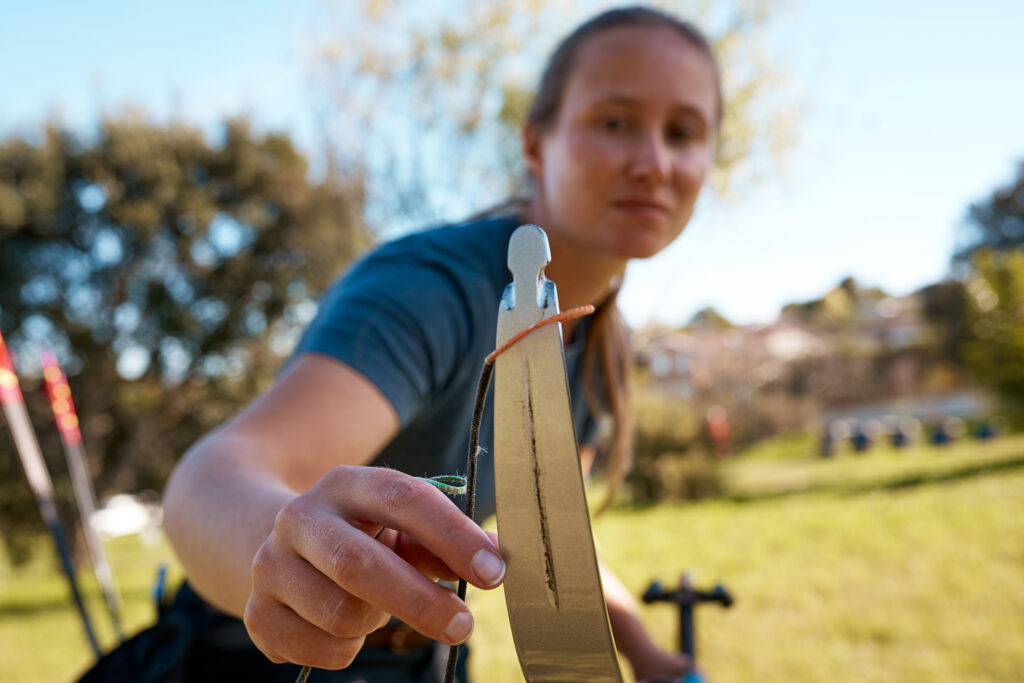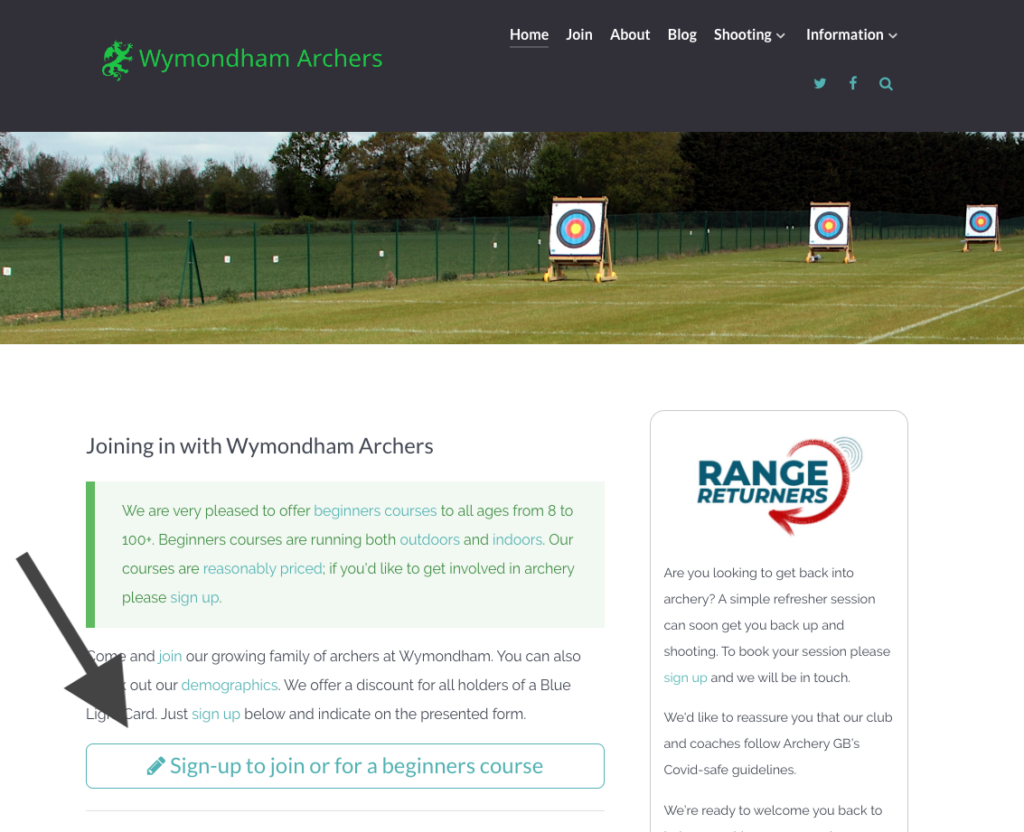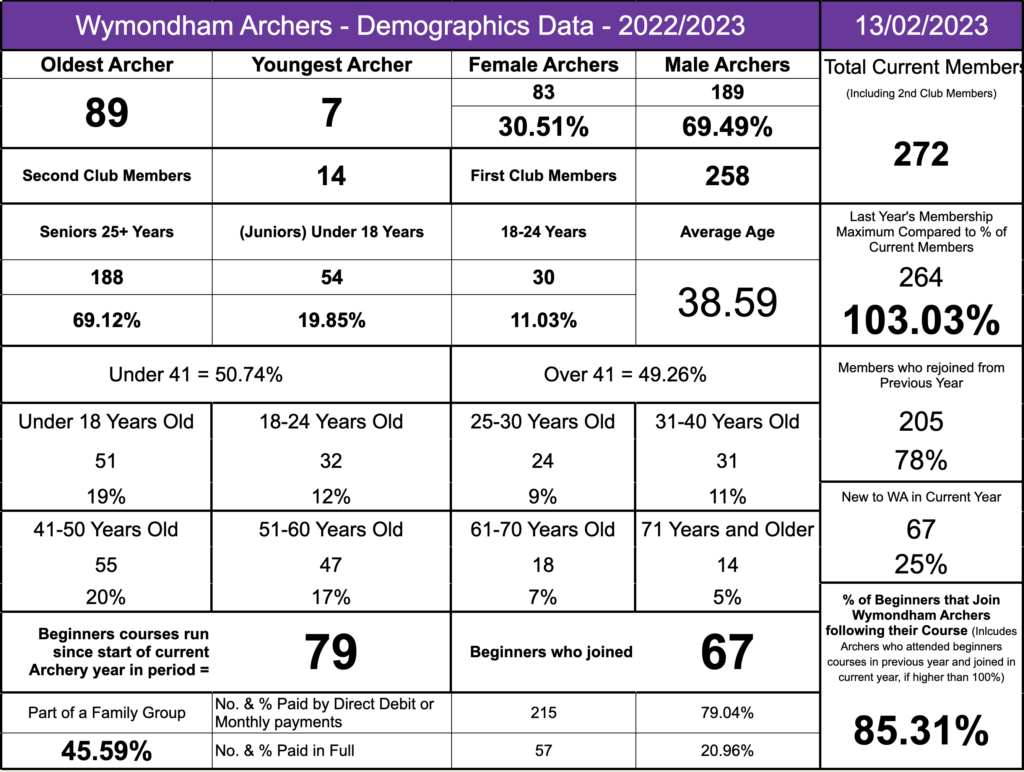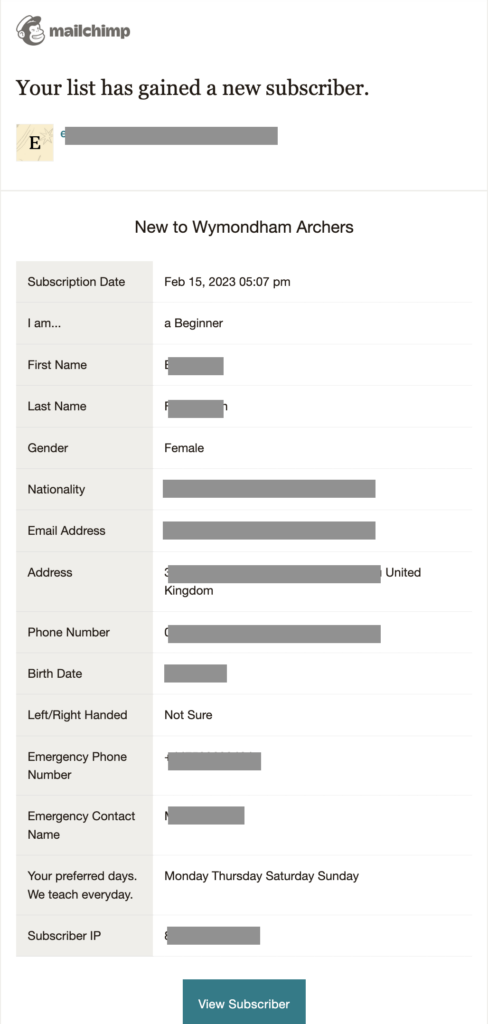Pete Hill shows you how to build and grow membership of your club using modern tools
Archery clubs, like any club, need one thing more than anything else, and that’s members. A club doesn’t work without them. We know new members are out there and we know archery is compelling – addictive, even. But we can struggle to get those future archers through the front door of our club.
What can we do? We could knock on doors, drop leaflets in our neighbourhoods, or tap up a friend at a local newspaper, but do we have time for that? Unfortunately, all the above only offer limited access to a small cohort of society, and it can be difficult to truly ascertain how effective these approaches are.
Getting your new members to contact you might be simpler than you think. Many of today’s future archers, like most people, are extremely well-connected electronically.
They are also hugely influenced by what they see, in film, online, in literature or on television. They can instantly search for the thing they see from right there, in front of them. Why not make it your archery club they search for and sign up to? It’s an easy step from watching something like a Marvel movie, Hunger Games or Lord Of The Rings, where your new archery club member gets that spike of interest, to where they search for ‘clubs near me’. Hopefully, they’ll click on a button and find your website.
There are several steps to gaining members for an archery club. Firstly, it’ll be all about finding an avenue that your new members can use to get in touch. Secondly, it’ll be all about responding to their interest in joining, and finally, it’ll be about getting them through the actual front door.
I am the chair of one of the largest archery clubs in the UK, Wymondham Archers. Some years ago, we opted to use a customer relationship management database (CRM) to enable us to remain in touch with our club members. We quickly realised that this new tool could also be used to encourage new members into our club.
We also realised that some people don’t know yet that they’ll fall in love with archery. Do you remember a time you didn’t need that Nespresso machine, that iPad or iPhone, or any other of the latest foods or gadgets out there? People often don’t know what they want until you present it to them. In this case, our job will be to get them excited about the sport.
We opted for a CRM that enabled a hyperlink from our website to a quick sign-up form that our prospective archers complete. You don’t necessarily need a website to make this happen; that hyperlink will work from Facebook, Twitter, email signatures or pretty much any platform that enables a click-through, which is what we do when we travel from website to website by clicking on links. One of the main reasons we used the CRM we chose was because it was free. We like free – it goes a long way.
A definite mindset change will need to be made once you step in the direction of a CRM, because now you will actually be marketing your club. Wymondham Archers is a UK archery club that is run entirely by volunteers. We have received sign-ups from as far away as Hong Kong. We could never have reached Asia without a CRM.
We opted for Mailchimp, but there are plenty out there to choose from. Free can quickly move to a subscription should you wish to do that. If you are in a position like our club was, you won’t have the funds. When Wymondham Archers adopted the sign-up page, we were a little club with under 70 members and had an average age of around 50.
Now, only a handful of years down the road, we have more than 270 members, with an average age of around 38. We receive many sign-ups per month, with more than 500 people making enquiries over the previous four years. Our demographics have expanded hugely, and even now we are continuing to grow in numbers.
Getting started is simple. Find a CRM company online and sign up for an account. It is likely to be a free product that provides you with up to a certain number of contacts and with limited functionality. But, as we’ve discovered, it will be sufficient to get you up and running.
What I’m talking about here are the two horrible siblings – marketing and sales. They are as uncomfortable to me as they may be to you. I’m no salesman – I’m an archer. Sadly, they are essential if you want to build a fantastic archery club.
Archery clubs need to get used to using the term ‘customer’ for their new archers, which I’m confident will be anathema to quite a few archery club members, officials and officers. We don’t want to be a customer – we want to be an archer. Our archers have names and we use them all the time. But we will need to fully embrace that we have something exciting to offer that other people want.
The sign-up form should be designed to find out who is contacting the club; you will need to think carefully about this. A typical solution would be to provide a drop-down list; your CRM may provide this as an option you can use. By asking the right questions, you will be able to find out who is contacting you and what level of experience they have. Are they a beginner? A person seeking a second club? A transfer from another club or an experienced archer who hasn’t picked up a bow in a while?
You may also add the caveat that each attendee will need an assessment of their skills, other than the beginner who we can assume doesn’t have any skills yet.
The rest of the form should enable you to find out details such as age, next of kin, telephone numbers and emergency numbers. For archery purposes, you will need to know whether they are left or right-handed since this will help in planning for equipment.
You may also want to have a space for affiliation association numbers, as this will help in transferring people over to your club if needed. Lastly, you should include a space for the prospective archer to state any health issues they may wish to share.
When the interested person clicks ‘Finish’ or ‘OK’ at the end of the form, they can then be notified via an email that informs them that they can unsubscribe at any time. That response email is key, and it should contain a holding statement. An example would be to thank them for their interest and assure them that they will receive a response within a certain time. Our experience with sign-ups is that they are always kinder to volunteers.
Your responsible person now has access to those who wish to be part of your club. They should also receive an email informing them of a new sign-up. We make sure to call our prospective archers, as we believe they want to be part of our community.
We start by confirming dates for assessments or beginner’s courses. We then place the course or assessment in the club diary. You’ll write to the new customer and send details for payment. When that hits the account, everything is arranged. For the person signing up, they get a sense of confidence and hopefully feel like they are being looked after by a club that knows what it’s doing.
Remember that you will be collecting data. There are laws protecting people in relation to the information you have about them and their ability to be removed from your database should they wish to. I won’t be going into the law in detail, though I will strive to keep you on the straight and narrow. Your CRM will also enable you to do this.
When Wymondham Archers began using Mailchimp, it was like signing up to Google. I suspect they use similar processes to make it easier to onboard you using their applications. Mailchimp’s data is secure and meets current legislative requirements, in particular the UK GDPR, keeping all the data in one place.
The subscriber has control over their data and can unsubscribe at any time. This ensures they are in charge of their own information. If they unsubscribe, it is only them that can put the information back. The database owner can delete records and do this in the knowledge that they too will be unable to retrieve that data. Records can also be archived should your database either get too big or outstrip your free application options.
If you have a website, it’ll be prudent to place your sign-up button on the front page. Don’t let it get embedded under those records or other information on your page. Remember, sign-ups make members and members make records. You need the members first.
The success rate for sign-ups with the above approach can be phenomenal, accepting that those signing up do want your exciting product, an assessment or a beginner’s course in archery. But you’ll be amazed how many people simply forget they signed up. A quick call will jog their memory – you’ve got their number now because they gave it to you.
Your CRM will provide regular reports, emailed to the database owner informing them how successful you have been in collecting data with the number of sign-ups per week. If you report on this for your club, you can provide a chart, as we do at Wymondham Archers.
Later, you can calculate who undertook a course and who joined. We want to know that what we are doing is working. Staying in touch with your existing members can also be done with some nifty tools that enable segmenting of your members. Segmenting members means placing groups of members into cateogries, such as this year’s members, committee and beginners. Multiple categories can be assigned to one person. Once segmented, you can write to selected groups. Newsletters, information sharing and more can now be created quickly and selectively, keeping your lovely sign-ups and existing members up to date.
Alongside our CRM, we use Gmail as our email service to get in touch with our new archers – and it’s free. Within Gmail, you can create a number of email addresses that link to respective officers within your club like chair, vice chair and secretary. Each gets their own email address and can use it for club business. If their tenure ends, making the change of email address to another person is simple by changing the password.
Within the Gmail suite, it is possible, with a little bit of fiddling, to get a set of templates to work. Once created, it is then possible to make the process of communication with your new sign-ups very slick. Using a CRM alongside a robust email provider will ensure that you’re giving a professional-looking response to your new archers, as well as your existing members.
Keeping things simple will also make life easier for busy people, much like yourself, to start and then keep things moving. Creating templates saves swathes of time!







